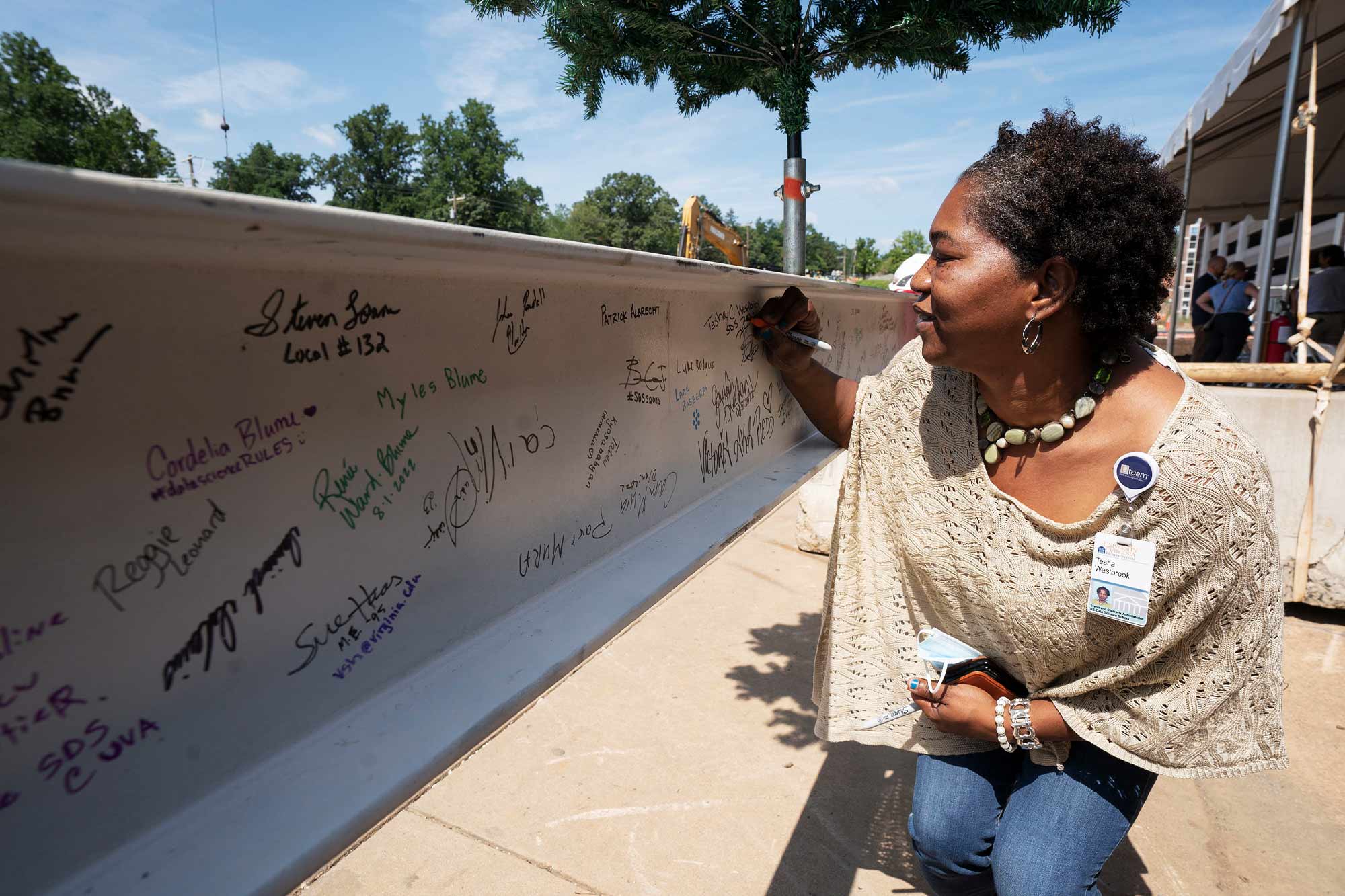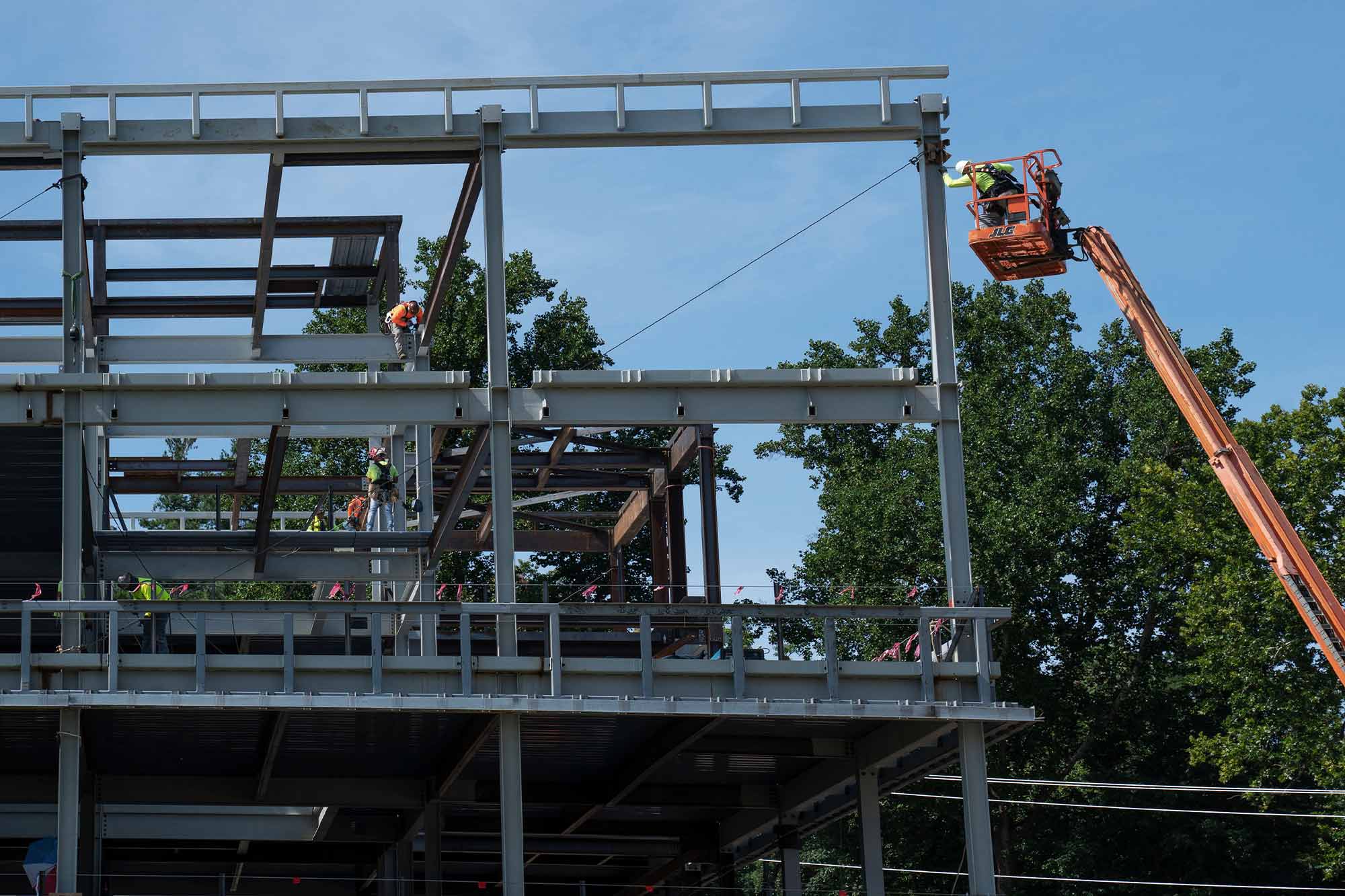Workers for Gilbane Building Company hoisted and placed the last of the high steel atop the University of Virginia’s School of Data Science building, after the beam had been festooned with flags and signatures.
The school’s new home will anchor the University’s entrance corridor on the along Ivy Road.
“This is wonderful,” said Judy Fox, an associate professor of data science, after she signed her name to the beam. “I am so excited and I am looking forward to moving to that building.”
University personnel and data science students clustered around the 20-foot beam, painted white, to sign their names with colored Sharpies before the beam, the last in the construction, was hoisted. Aside from the signatures, the beam was decorated with U.S. and UVA flags and an artificial pine tree.
The traditional “topping out” ceremony celebrates completing the steel work, typically the most dangerous part of any large construction job, with construction workers and school stakeholders signing their names to the last beam added to the building.
About 300 construction workers, data science students and University personnel gathered at the job site Tuesday morning to hear remarks, watch the beam be lifted into place and eat lunch together. Among the speakers were Philip Bourne, dean of the School of Data Science; Kevin McMichael, senior project executive for Gilbane Building Co.; Alice Raucher, the architect for the University of Virginia; and Mark Stanis, director of capital construction for Facilities Management.












